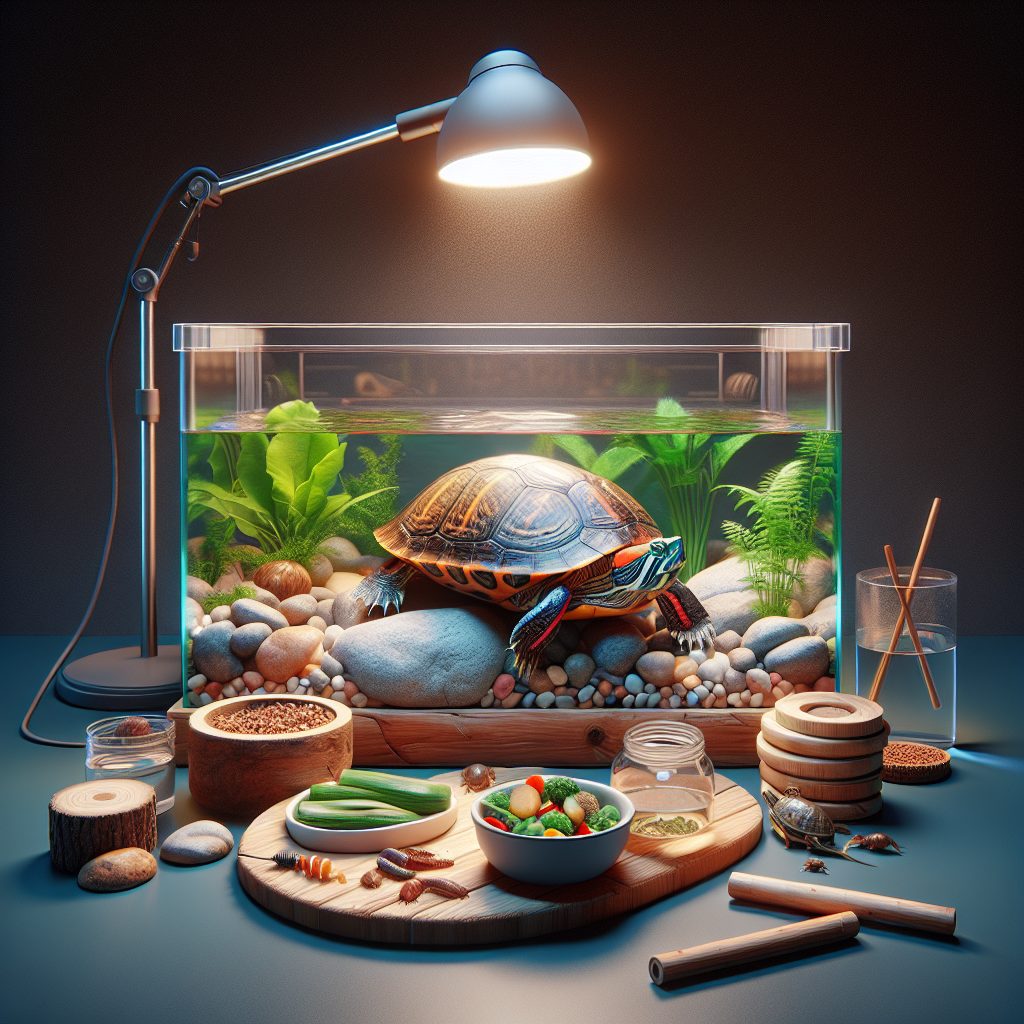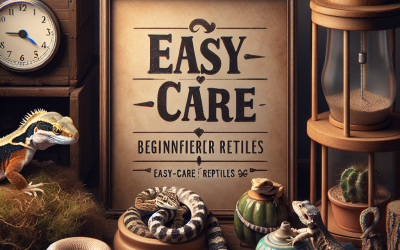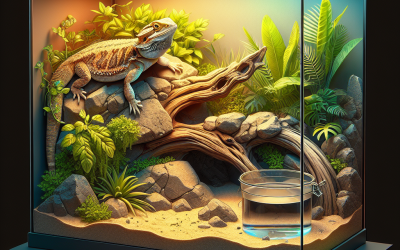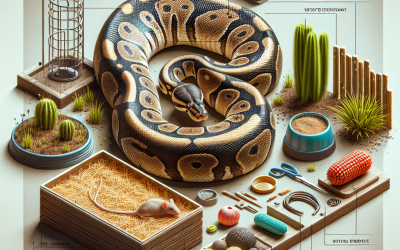How to Care for a Red-Eared Slider Turtle at Home
Introduction
Are you considering adding a charming reptilian companion to your home? The Red-Eared Slider Turtle might just be the perfect choice! Known for their vibrant colors and engaging personalities, these turtles have become popular pets among enthusiasts and families alike. However, understanding how to properly care for a Red-Eared Slider Turtle is crucial to ensure a healthy and happy life for your new friend.
In recent years, there’s been a surge in interest surrounding the care of these delightful creatures. This is largely due to their fascinating behaviors, manageable size, and relatively low maintenance requirements compared to other pets. However, many prospective owners often overlook the specific needs these turtles have, which can lead to health issues down the line.
This article will guide you through essential aspects of caring for your Red-Eared Slider, from setting up their habitat to understanding their dietary needs. We’ll cover:
- Choosing the Right Habitat
- Feeding and Nutrition
- Health Care and Maintenance
- Socialization and Interaction
- Common Challenges and Solutions
By the end of this guide, you’ll be well-equipped with the knowledge necessary to provide excellent care for your turtle, ensuring it thrives in your home environment.
What is Care for a Red-Eared Slider Turtle?
Definition
Care for a Red-Eared Slider Turtle encompasses a variety of practices aimed at promoting the health and wellbeing of this species. This includes creating an appropriate habitat, providing a balanced diet, ensuring proper health care, and maintaining an enriching environment.
Historical Context
Originally native to the southern United States and parts of Mexico, the Red-Eared Slider has made its way into homes across the globe. Their introduction to the pet trade in the 20th century marked a significant point in their history, leading to an increase in their popularity. However, this also raised concerns about their care and the impact of releasing them into non-native environments.
The Importance of Care for a Red-Eared Slider Turtle
Proper care for these turtles is essential not only for their survival but also for their quality of life. In recent years, awareness of their specific needs has grown, as owners realize that neglecting aspects such as habitat size, water quality, and diet can lead to serious health problems.
Care for a Red-Eared Slider Turtle in the Context of Pet Ownership
Understanding the nuances of caring for a Red-Eared Slider is vital in the broader context of pet ownership. With their unique requirements, they differ significantly from more traditional pets like dogs and cats. Prospective owners must educate themselves about the complexities involved in creating a suitable environment for these aquatic reptiles.

Choosing the Right Habitat
When it comes to care for a Red-Eared Slider Turtle, creating the right habitat is paramount. These turtles require both aquatic and dry areas to thrive.
Ideal Tank Size
- Minimum Size: A single adult Red-Eared Slider requires a minimum tank size of 75 gallons. If you have multiple turtles, increase the tank size accordingly.
- Space Considerations: Ensure there’s enough room for swimming, basking, and hiding. The more space you can provide, the healthier your turtle will be.
Water Quality
Maintaining clean water is vital for the health of your turtle.
- Filtration System: Invest in a high-quality filtration system to keep the water clean and free of harmful bacteria.
- Water Changes: Regularly change 25-50% of the water weekly to maintain optimal conditions.
Basking Area
Turtles need a warm, dry area where they can bask under a heat lamp.
- Basking Spot: Create a platform above the water where your turtle can sunbathe.
- Temperature Control: Ensure the basking area is kept around 85-90°F (29-32°C).
Lighting
Proper lighting is essential for a Red-Eared Slider’s health.
- UVB Lighting: Use UVB bulbs to provide the necessary light for calcium metabolism, which is crucial for shell health.
- Lighting Schedule: Follow a consistent 12-hour light/dark cycle to mimic natural conditions.
Substrate and Decorations
Adding substrate and decorations can enhance your turtle’s habitat.
- Substrate Choices: Choose smooth gravel or sand, avoiding sharp objects that could injure your turtle.
- Hiding Places: Incorporate plants, rocks, and other decorations to provide hiding spots and stimulate exploration.
Feeding and Nutrition
A balanced diet is critical for the wellbeing of your turtle. Understanding care for a Red-Eared Slider Turtle also means knowing what to feed them.
Dietary Needs
- Commercial Pellets: Provide a high-quality turtle pellet as the foundation of their diet.
- Leafy Greens: Incorporate dark leafy greens like kale, collard greens, and romaine lettuce.
- Protein Sources: Occasionally offer protein-rich foods like mealworms, crickets, or small fish.
Feeding Schedule
Establishing a consistent feeding schedule can help regulate your turtle’s diet.
- Juvenile Turtles: Feed every day.
- Adult Turtles: Feed every other day.
Supplements
Consider adding supplements to their diet to ensure they receive all necessary nutrients.
- Calcium Powder: Sprinkle calcium powder on their food, especially if they are not getting enough from their diet.
- Multivitamins: Occasionally provide a multivitamin supplement as recommended by a veterinarian.
Health Care and Maintenance
Regular health care is an essential aspect of care for a Red-Eared Slider Turtle.
Routine Check-Ups
- Veterinary Visits: Schedule annual veterinary check-ups to monitor your turtle’s health.
- Signs of Illness: Be vigilant for signs of illness, such as lethargy, abnormal swimming, or changes in appetite.
Shell Care
The shell is a vital aspect of a turtle’s health.
- Shell Cleaning: Gently scrub the shell with a soft brush to remove algae and bacteria.
- Watch for Shell Rot: Keep an eye out for any signs of shell rot, which requires immediate veterinary attention.
Water Temperature and Quality
Regularly monitor water temperature and quality to prevent health issues.
- Water Temperature: Maintain a water temperature between 75-80°F (24-27°C).
- pH Levels: Keep the pH level around 6.5-7.5 for optimal health.
Socialization and Interaction
While Red-Eared Sliders are not known for being social creatures, interaction is still important.
Handling Your Turtle
- Gentle Handling: Always handle your turtle gently to build trust and reduce stress.
- Limit Handling: Avoid excessive handling, as it can be stressful for them.
Enrichment Activities
Provide enrichment to keep your turtle mentally stimulated.
- Swimming Toys: Use floating toys to encourage playful swimming.
- Obstacle Courses: Create a small obstacle course in the water for your turtle to navigate.
Common Challenges and Solutions
Despite their hardy nature, Red-Eared Sliders can face common challenges.
Health Issues
- Respiratory Infections: These can occur due to cold water or drafts. Ensure your turtle’s habitat is kept warm and dry.
- Shell Problems: Shell rot and pyramiding are common issues. Regular veterinary visits can help prevent and treat these conditions.
Behavioral Issues
- Boredom: If your turtle is not stimulated, it may become lethargic. Introduce new toys or change the layout of their habitat to keep them active.
- Aggression: If you have multiple turtles, monitor for aggression. Provide ample space and hiding spots to reduce conflicts.
Conclusion
Caring for a Red-Eared Slider Turtle can be a rewarding experience, offering companionship and a fascinating glimpse into the world of reptiles. By understanding their specific needs, including habitat setup, dietary requirements, health care, and socialization, you can ensure that your turtle thrives in your care.
As you embark on this journey, remember that ongoing education and vigilance are key to a successful pet ownership experience. For more insights into pet care, check out our guide on exotic pet care essentials. With the right approach, your Red-Eared Slider will bring joy to your home for many years to come!
Resource Links:
- thesprucepets.com: … Water quality must be maintained no matter where you house your turtle, and both supplemental heat and UVB lighting should be provided. Setting …
- petco.com: Adult aquatic turtles of the same species may be housed together as long as the aquarium is large enough. Do not house different turtle species together and …
- reddit.com: … The water should be 70-75 degrees, although as for the heater it depends on how hot/ cool your house is. If you’re always keeping your house at …




0 Comments